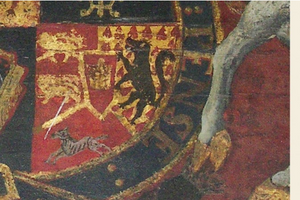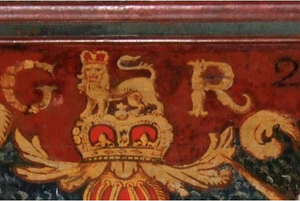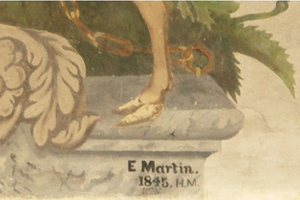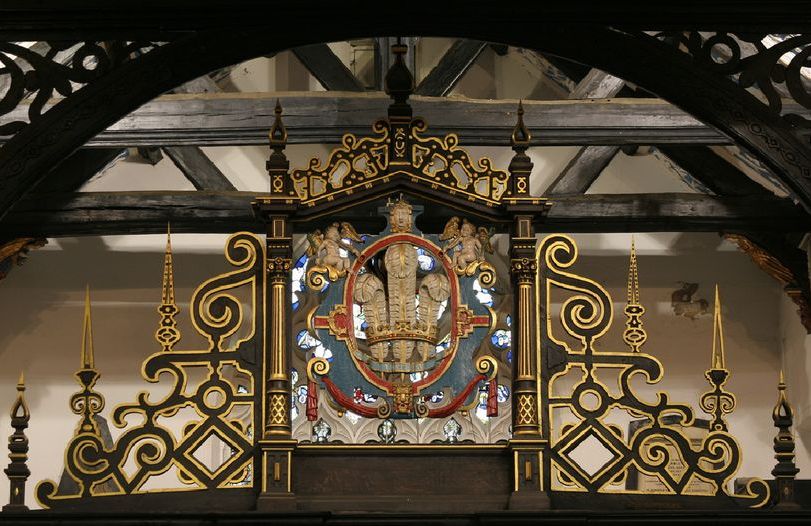An Historical Context
Making and Remaking Royal Arms
Unless Royal Arms are built into the fabric of the church, removal and complete destruction is possible.
However, an advantage of portability is that the arms can be reversed or taken down and concealed. They can then be brought out of hiding in more favourable times.
This may have happened under Mary I who reigned from 1553-1558, when arms were ordered to be removed from churches. It certainly occurred under Cromwell’s Commonwealth rule, as surviving examples with royal arms on one side and Commonwealth arms on the other confirm.

Economising on Updating
Reversal and repainting would have saved parishes money, especially if the arms were painted on expensive wooden panels. Even more money would be saved if the existing arms were updated by simply altering the monarch’s initials and the date.Dates and initials can therefore commemorate an alteration and cannot always be taken at face value. As well as initials and dates, the details of the arms could also be changed to transform a Stuart arms, for example, into a Hanoverian one by merely repainting the first and fourth quarters of the shield.
Who were the Painters?
Artists’ names are only occasionally found on the Royal Arms themselves, but they often appear in the parish records when payments were made. Occasionally well-known names appear: Sir Christopher Wren and Sir John Ninian Comper both designed Royal Arms for churches, for example.
 However these are the exceptions and the majority of the works are either by little known artists and craftsmen or remain anonymous. Where individual artists can be identified, they are most commonly found to be sign-writers, including those responsible for the local inn signs, coach painters, painters and decorators and carvers.
However these are the exceptions and the majority of the works are either by little known artists and craftsmen or remain anonymous. Where individual artists can be identified, they are most commonly found to be sign-writers, including those responsible for the local inn signs, coach painters, painters and decorators and carvers.Some of the artists clearly had difficulties with the various languages that appear on the arms, and sometimes came to a phonetic solution: “Dieuit Mon Droit” replacing the more usual “Dieu et Mon Droit”.
Amateur painters have also been involved in both creating and restoring Royal Arms, including clergymen and their wives and parishioners. In the late 1970s it was even possible to see groups of teenagers repainting arms from scaffolding towers as part of the government’s Youth Opportunities Programme.

